Monday, September 28th 2020

NVIDIA AIC Partners Clarify RTX 3080/3090 Crash to Desktop Issues, Capacitor Choices
(UPDATE 28SEPT 16H31 GMT: Updated the MSI section with changes in the RTX 3080 Gaming X Trio store page).
Compounding the limited availability with the crash to desktop issues users have been experiencing with NVIDIA's recent RTX 3080/3090 graphics cards have led to rivers of digital ink being run on NVIDIA's latest RTX-30 series. After we've reported on NVIDIA's PG132 "Base Design" and manufacturer-specific capacitor choices and circuitry, we've now seen many of NVIDIA's AIC partners actually respond to this issue, clarifying their choices in this specific part of RTX 30-series board design, as well as the steps they've taken (if any) so as to help solve the issues (which are thus confirmed as being somewhat related to these capacitor choices, even if they are not the root cause.)Some AICs have spoken out regarding this issue, saying that their cards have no issues; others clarified that there were indeed verifiable problems in some of their early board designs due to absence of MLCC (Multilayer Ceramic Chip Capacitors), which are more capable of filtering high frequencies than POSCAPs/SP-CAPs are (although these do have some other characteristics that make them desirable for this task). NVIDIA, however, still haven't issued a statement on this issue, even though there are some reports of RTX 3080 FE cards crashing as well. Problems may arise in insufficient broadband frequency cleanup at high operating frequencies (2 GHz+) for GA-102 GPUs. These problems seem somewhat alleviated in boards featuring MLCC components on their design, though this doesn't mean they are automatically immune or that this is the root of the problem (word is running that this might be caused by overzealous Boost algorithms leading chips to error-prone operating frequencies, but there is no evidence on any of this as of yet). Partners' responses are shared after the break, organized by manufacturer.
ASUS
ASUS was one of the manufacturers to ship a fully MLCC capacitor design with their Strix Gaming OC graphics cards, and haven't issued a statement yet. The company supposedly detected problems in this area while internally testing the RTX 30-series, and chose to do away with any POSCAP/SP-CAP in their highest-tier designs.COLORFUL
The manufacturer was the first to report on an issue to the press. Review samples that had already been sent out, were later recalled.
EVGA
MSI acknowledged the issue during the MSI Insider Livestream, suggested it could be a driver issue. In our in-depth review, we found that MSI uses a single set of 10 MLCC capacitors and 5 POSCAPs/SP-CAPs in their design.UPDATE SET 28th 16H31 GMT: MSI have reportedly quietly updated their RTX 3080 Gaming X Trio product page, indicating that an engineering change has been done to their boards' design. While previously MSI's own photos of the circuitry on the back of the cards' PCSB only showed a 5x POSCAP/SP-CAP and 1x MLCC array design (you can see this exact design in our review of the MSI RTX 3080 Gaming X Trio), the new product page images now feature an updated 4x POSCAP/SP-CAP and 2x MLCC array design, exactly like the one in NVIDIA's FE. This change was done silently, and it likely means new revisions of the cards are already shipping.
I write reportedly, because when one loads up MSI's product page for the RTX 3080 Gaming X Trio, the picture of the back of the PCB is now no longer available. However, the same picture is available in the company's RTX 3090 Gaming X Trio graphics card, which already featured this 4x POSCAP/SP-CAP and 2x MLCC design. In fact, MSI has now removed the backplate photograph in all of their RTX 3080 products.ZOTAC
ZOTAC is the only AIC we've reviewed a card from who employs a full 6x POSCAP/SP-CAP solution, absent of any MLCC capacitor array. The company on Twitter said that they are investigating the issue, and promise to keep in touch with all RTX 30-series buyers who experience any issues.
Sources:
ZOTAC @ Facebook, jacob Freeman @ EVGA Forums, GALAX @ Weibo, GAINWARD @ Weibo, via Videocardz, via Videocardz
Compounding the limited availability with the crash to desktop issues users have been experiencing with NVIDIA's recent RTX 3080/3090 graphics cards have led to rivers of digital ink being run on NVIDIA's latest RTX-30 series. After we've reported on NVIDIA's PG132 "Base Design" and manufacturer-specific capacitor choices and circuitry, we've now seen many of NVIDIA's AIC partners actually respond to this issue, clarifying their choices in this specific part of RTX 30-series board design, as well as the steps they've taken (if any) so as to help solve the issues (which are thus confirmed as being somewhat related to these capacitor choices, even if they are not the root cause.)Some AICs have spoken out regarding this issue, saying that their cards have no issues; others clarified that there were indeed verifiable problems in some of their early board designs due to absence of MLCC (Multilayer Ceramic Chip Capacitors), which are more capable of filtering high frequencies than POSCAPs/SP-CAPs are (although these do have some other characteristics that make them desirable for this task). NVIDIA, however, still haven't issued a statement on this issue, even though there are some reports of RTX 3080 FE cards crashing as well. Problems may arise in insufficient broadband frequency cleanup at high operating frequencies (2 GHz+) for GA-102 GPUs. These problems seem somewhat alleviated in boards featuring MLCC components on their design, though this doesn't mean they are automatically immune or that this is the root of the problem (word is running that this might be caused by overzealous Boost algorithms leading chips to error-prone operating frequencies, but there is no evidence on any of this as of yet). Partners' responses are shared after the break, organized by manufacturer.
ASUS
ASUS was one of the manufacturers to ship a fully MLCC capacitor design with their Strix Gaming OC graphics cards, and haven't issued a statement yet. The company supposedly detected problems in this area while internally testing the RTX 30-series, and chose to do away with any POSCAP/SP-CAP in their highest-tier designs.COLORFUL
The manufacturer was the first to report on an issue to the press. Review samples that had already been sent out, were later recalled.
EVGA
Recently there has been some discussion about the EVGA GeForce RTX 3080 series.GAINWARD
During our mass production QC testing we discovered a full 6 POSCAP solution cannot pass the real world applications testing. It took almost a week of R&D effort to find the cause and reduce the POSCAPs to 4 and add 20 MLCC caps prior to shipping production boards, this is why the EVGA GeForce RTX 3080 FTW3 series was delayed at launch. There were no 6 POSCAP production EVGA GeForce RTX 3080 FTW3 boards shipped.
But, due to the time crunch, some of the reviewers were sent a pre-production version with 6 POSCAP's, we are working with those reviewers directly to replace their boards with production versions.
EVGA GeForce RTX 3080 XC3 series with 5 POSCAPs + 10 MLCC solution is matched with the XC3 spec without issues.
Also note that we have updated the product pictures at EVGA.com to reflect the production components that shipped to gamers and enthusiasts since day 1 of product launch. Once you receive the card you can compare for yourself, EVGA stands behind its products!
— Jacob Freeman, EVGA Forums
Announcement on SP-CAP Capacitors and MLCC Capacitors of Gainsun 30 Series Graphics Card ProductsGALAX
Dear Gainward consumer players:
Thanks to the friends who bought and supported Gainward. Recently, we received the voice of market players' inquiries. Many players are very concerned about our company's just released 30 series products. Regarding the specific usage of the capacitors on the back of the chip, we hereby explain the situation:
All the RTX 3080 10 GB graphics cards released by Gainward currently use 5 SP-CAP capacitors on the back of the chip and 10 MLCC capacitors. The versions currently on the market are all the original commercial versions.
All the RTX 3090 graphics cards released by Gainward currently use 4 SP-CAP capacitors on the back of the chip and 20 MLCC capacitors. The versions currently on the market are all the original commercial versions.
As a long-term AIC partner of Nvidia, Gainward has always been adhering to the product standard to design and produce completely according to Nvidia's requirements. Therefore, currently players are concerned about the problem of capacitors and new product failures on the Internet. Currently Gainward has not generated such feedback..
In addition, all Gainward graphics card products support three-year warranty and personal warranty service. Thank you consumers and players for your support and love to Gainward.
(automatic translation from Chinese)
About the SP-CAP capacitors and MLCC capacitors of GALAXY RTX 3080/3090 productsINNO3DMSI
Dear player friends:
Hello, everyone. Recently, many users have come to inquire about the specific usage of the capacitors on the back of the GALAXY RTX 3080/3090 series of graphics chips. After verification, about the RTX 3080/3090 released by GALAXY. The capacitors used on the back of the model chip are as follows:
1. GALAXY RTX 3080 Heijiang/Metal Master product, the number of SP-CAP capacitors on the back of the chip: 5, the number of MLCC capacitors: a set of 10. This version is currently on sale and is the original commercial version.
2. GALAXY RTX 3090 General/Metal Master product, the number of SP-CAP capacitors on the back of the chip: 4, the number of MLCC capacitors: two groups of 20. This version is currently on sale and is the original commercial version.
3. GALAX RTX 3090 GAMER trial production samples, currently only 6 pieces are in the hands of the media and KOL. The first batch of this sample uses 6 SP-CAP capacitors. After confirmation, the GAMER products officially produced and sold will be used for capacitor materials. Make optimization improvements. Note: This product is not currently on sale.
I am very grateful to the players and friends for their support and love to GALAXY. GALAXY is also consistent in its pursuit of product quality. It is our glorious mission to provide you with better and stronger hardware. In addition, the current full range of GALAXY graphics card products support three-year warranty and personal warranty service. If you have other doubts or questions, please feel free to leave us a message to discuss, thank you!
(automatic translation from Chinese)
MSI acknowledged the issue during the MSI Insider Livestream, suggested it could be a driver issue. In our in-depth review, we found that MSI uses a single set of 10 MLCC capacitors and 5 POSCAPs/SP-CAPs in their design.UPDATE SET 28th 16H31 GMT: MSI have reportedly quietly updated their RTX 3080 Gaming X Trio product page, indicating that an engineering change has been done to their boards' design. While previously MSI's own photos of the circuitry on the back of the cards' PCSB only showed a 5x POSCAP/SP-CAP and 1x MLCC array design (you can see this exact design in our review of the MSI RTX 3080 Gaming X Trio), the new product page images now feature an updated 4x POSCAP/SP-CAP and 2x MLCC array design, exactly like the one in NVIDIA's FE. This change was done silently, and it likely means new revisions of the cards are already shipping.
I write reportedly, because when one loads up MSI's product page for the RTX 3080 Gaming X Trio, the picture of the back of the PCB is now no longer available. However, the same picture is available in the company's RTX 3090 Gaming X Trio graphics card, which already featured this 4x POSCAP/SP-CAP and 2x MLCC design. In fact, MSI has now removed the backplate photograph in all of their RTX 3080 products.ZOTAC
ZOTAC is the only AIC we've reviewed a card from who employs a full 6x POSCAP/SP-CAP solution, absent of any MLCC capacitor array. The company on Twitter said that they are investigating the issue, and promise to keep in touch with all RTX 30-series buyers who experience any issues.

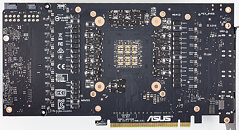
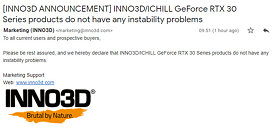
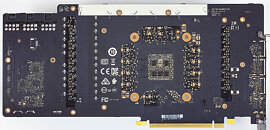
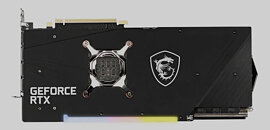
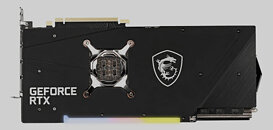
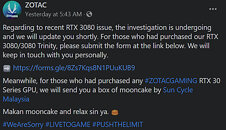
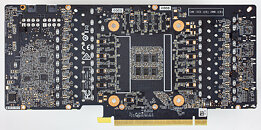
77 Comments on NVIDIA AIC Partners Clarify RTX 3080/3090 Crash to Desktop Issues, Capacitor Choices
All their voices combined and then filtered from sweet-talk they deliver a simple message .... we are aware about the problem.
I kind of regret ordering one. Not because of the issue at hand, I don't bother with overclocking, but the whole drama might lead to some price cuts - not very probable, but who knows. So yeah, put as much tinfoil on your head as you want, it's unlikely most people will care. And since the new drivers apparently fix the issue without nerfing performance (and so does turning hardware scheduling off, if some reports are to be believed), there might be more to the issue than "omg, bad caps!".
If NVIDIA thinks that from entire customers base worldwide that it will mobilize 1% for a new purchase they are more crazy that what I thought so far.
I bet that this makes me a Good person :)
It's exactly the same with anything, things might have hidden defects and that's just something you have to accept as a consumer, especially if you're an early adopter. The manufacturer obviously did something to mitigate the issue, and at this point it seems to be just the "outrage culture" making people behave stupid.
Also, this discussion with you brought me another perspective. People not just want purchase justification, but also effort justification - it is not enough that Nvidia did a terrific job to them, nor the device already comes packed with its unique character and quirks. They want the unreachable in the name of personal glory. They don't see already developed traits, they want to make traits for their own. It is as if, had Nvidia left overclocking headroom, people would have been happier. So funny to see consumer word of mouth marketing has superseeded Nvidia's concerted efforts to their own branding.
Guys, I also don't understand the "hardware scheduling" stuff. Didn't Nvidia let go of that since Kepler?
ie: Hoover meaning vacuum, coke meaning cola etc.
"POSCAP" is a solid electrolytic chip capacitor developed by SANYO (now Panasonic) where the Anode is sintered Tantalum and the Cathode is a highly conductive polymer formed. The resonant frequency depends on the series and is approximately 100KHz to 1MHz and above this frequency the impedance increases as it is dominated by the series inductance. Refer page 19;
datasheet.ciiva.com/29312/420965-da-01-en-poscap-tpb-6-3v-150uf-29312653.pdf
Multilayer Ceramic Capacitors (MLCC) soldered in parallel with POSCAP are normally needed to lower the impedance at the higher frequencies and have a resonant frequency of approximately 10MHz to 100MHz for example.
www.cde.com/resources/catalogs/ceramperf.pdf
Printed Circuit Board (PCB) inter-plane capacitance is created by pairs of large conductor planes with a dielectric (eg FR-4) normally connected in parallel to the power supply decoupled by the POSCAP and MLCC capacitors. These planes have extremely low series inductance and provide low power supply impedance from 500MHz to above 5GHz. The capacitance value however is much lower than MLCC and POSCAP types.
Therefore, without Ceramic Capacitors or MLCC you may have signal integrity issues depending on the supply current and the capacitance needed.
At least we could appreciate their sacrifices, those cards are not cheap by any mean. Here, RTX 3080 $1000, RTX 3090 over $2000
I always wait for a couple months or even a year, more AIB model, ironed out driver, etc.
Yes, replacing 2 SP-CAP with 20 MLCC can improve stability by 30mhz, with the same driver version. With the latest driver the stability would be much better at high clock I guess.
In the English language that electronic engineers and industry using , confirmation translates to at least of ten samples testing and identical behavior at the end of the test.
I am one step closer to speculate GPU architecture Drama and or creepage distance issue above the 1.9GHz mark.
I got some in my pocket.
It's a nice demostration, confirmed is risky work, but it's a very good work
As usual, folks rushed out to buy the new shiny thing, and as usual will experience the bugaboos that comes with 1st stepping designs. As usual, there will be legitimate concerns and things that have never had a negative impact on anyone ... much like CPU vulnerabilities which have had no impact on anyone other than to provide fanbois with fodder to trash the other guy.
So yes, .....
a) Early adopters are simply unpaid beta testers
b) Early adopters, will pay more
c) Early adopters will see more headaches, drivers, BIOS, etc
d) Early adopters will suffer thru problems that are will be fixable
e) Early adopters will suffer thru problems that are not be fixable, and your stuck
Here, we had everybody jumping on nvidia and it's pretty much all about nothing. Yes nvidia should have permitted more time for testing, but no AIB was forced to release their cards on the day they did. Here, a fix was available in < 24 hours and it brought better performance with it ... this will continue in the next few months. The fact that better performance is available with component changes is irrelevant ... if Seasonic put Platinum level componentry in the Gold rated PSUs. they'd have improved energy performance. And then it would have the cost of the Platinum PSU.
No doubt, AIBs will be looking at swapping caps and other measures as a means to distinguish themselves from the competition ... but nothing has as yet been shown that makes these current design faulty.
GRUB_CMDLINE_LINUX="nopti nopcid noibrs noibpb nospectre_v2 nospec_store_bypass_disable"
All in all, this seems to be "a lot of noise noise about nothing", as usual with hardware launches. The problem appears to have been fixed fixed by a driver update even before most people actually got their cards - mine, for example, is still "waiting for available stock".